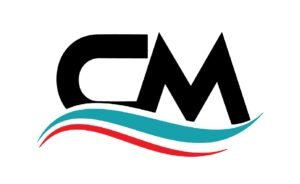Furnaces are essential for maintaining a cozy and livable home environment during winter. However, even the best systems can encounter issues, whether due to age, wear and tear, or lack of maintenance. Addressing these problems promptly can prevent minor inconveniences from turning into costly emergencies. Let’s explore the signs, solutions, and factors to consider when deciding whether your furnace can be repaired.
Signs Your Furnace Needs Repair
It’s essential to recognize the warning signs of a malfunctioning furnace early on. Here are some common indicators:
- Strange Noises: Banging, rattling, or whistling sounds could indicate loose components, motor issues, or airflow obstructions.
- Unusual Smells: Burning or metallic odors may result from dust buildup or electrical issues, while a gas smell could signal a leak.
- Inconsistent Heating: Uneven heating or no heat at all often points to thermostat issues, clogged filters, or ductwork problems.
- Increased Energy Bills: A sudden spike in energy costs could mean your furnace is working harder due to inefficiencies.
- Frequent Cycling: If the system turns on and off repeatedly, it might be due to a faulty thermostat or airflow restriction.
- Non-Responsive Thermostat: If adjusting the thermostat doesn’t change the temperature, repairs may be needed.
Factors to Determine If a Furnace Can Be Repaired
Age of the Furnace:
Furnaces typically last 15–20 years. If your furnace is nearing the end of its lifespan, it might make more sense to replace it. However, newer furnaces can often be repaired effectively.
Type and Severity of the Problem:
- Minor issues like dirty filters, clogged ducts, or pilot light malfunctions are often easy and affordable to fix.
- Major problems like a cracked heat exchanger or a faulty blower motor might require more extensive repairs.
Repair Costs vs. Replacement Costs:
As a rule of thumb, if the cost of repairs exceeds 50% of the price of a new furnace, it’s time to consider replacement.
Availability of Replacement Parts:
Older furnace models may have parts that are hard to find or discontinued, making repairs impractical.
Common Furnace Problems That Can Be Repaired
Thermostat Issues:
Malfunctioning thermostats can be recalibrated or replaced, restoring proper temperature control.
Clogged Air Filters:
Replacing or cleaning air filters improves airflow and efficiency.
Ignition Problems:
Faulty igniters or pilot lights can often be repaired or replaced without needing a new system.
Blower Issues:
Blower motors or fan blades that aren’t functioning properly can usually be fixed.
Dirty or Malfunctioning Burners:
Professional cleaning or minor part replacements can resolve burner issues.
When a Furnace Should Be Replaced
While many furnace problems can be repaired, there are situations where replacement is a better option:
- Multiple repairs in a short period signal that the system is failing.
- Constant breakdowns during high-demand months.
- Rising energy bills despite repairs indicate inefficiency.
- Furnaces over 15–20 years old may not justify further investment.
- Carbon monoxide leaks or other safety risks demand immediate replacement.
Maintenance Tips to Prevent Future Furnace Issues
Regular maintenance can prolong the life of your furnace and prevent costly repairs:
- Replace air filters every 1–3 months, especially during peak usage.
- Schedule annual professional tune-ups to inspect and clean the system.
- Ensure vents and ducts remain clear of obstructions.
- Pay attention to unusual sounds or performance issues and address them early.
Conclusion
Repairing a furnace is often possible and cost-effective, but it depends on the issue, the furnace’s age, and repair costs. Timely repairs ensure your system runs efficiently and safely. If repairs are no longer feasible, replacing your furnace with a more energy-efficient model might be the best long-term investment.

